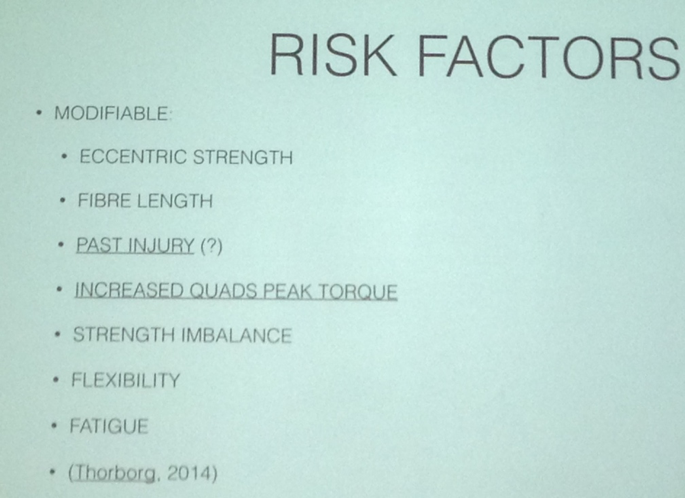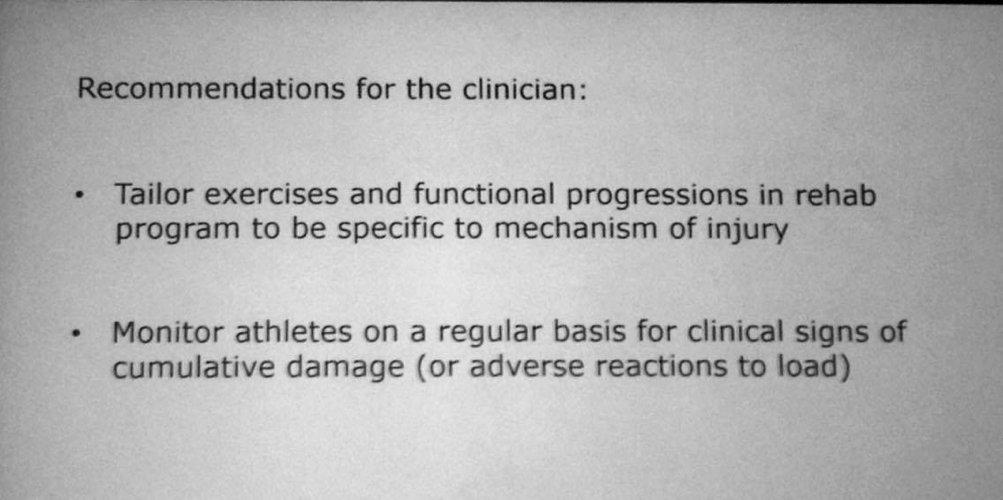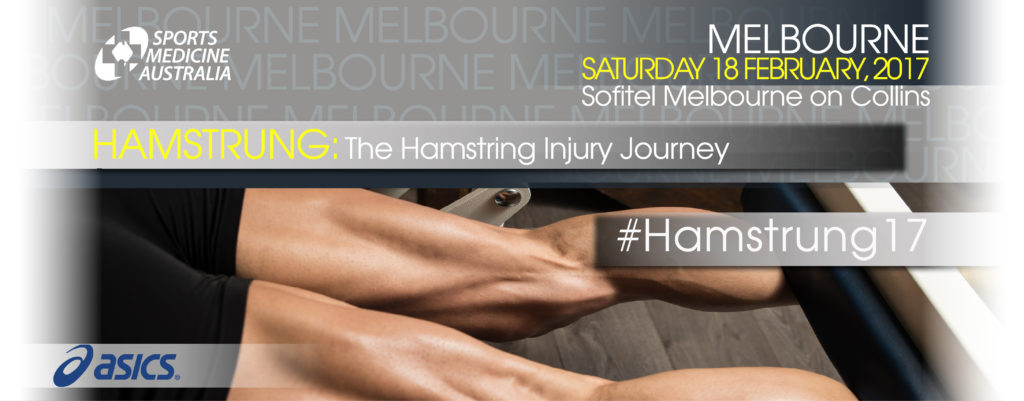By: @Mathias Brandhøj & @Kristian Lyng
The #Hamstrung17 Conference – the “Hamstring Injury Journey”, was held in Melbourne on the 18th of February.
The following blog is a recap of the main points from a fantastic day showcasing top speakers and stimulating discussions. Read below the infographic for our take home messages on hamstring injury prevention, and some short interviews with presenters.
Take home messages on how to prevent hamstring injuries from #hamstrung17:
- Be specific in your training – train for the requirements of your sport
- Athlete monitoring using the acute/chronic workload method can help predict the risk of injury
- Individualisation is key. You should choose exercises that fit the athlete and the specific sport
- Think about the modifiable risk factors, use your training regime to reduce the factors that you can actually reduce – don’t waste time on others
Anatomy, Epidemiology and Injury mechanism
@andrew_jowett kicked off the conference by reminding us that hamstring injuries are a serious concern in Sports Medicine and account for a whopping 19 % of all injuries in the AFL.
He also talked about the risk factors of getting injured, where he emphasised we should stop thinking external (e.g. Rules, surrounding) and internal (e.g. Age, previous injury), and start thinking of them as modifiable and non-modifiable;
 Slide from presentation by @andrew_jowett
Slide from presentation by @andrew_jowett
His last point was that the anatomy matters:
“It helps us understand the diagnosis, it gives us some idea of the prognosis and possible mechanisms for treatment of hamstring injuries”
Physiotherapist Dr. Anthony Schache then spoke about hamstring injury mechanisms. Hamstring injuries can occur with a variety of different mechanisms, usually involving running, kicking and sprinting and importantly even with submaximal loads.
His take home massages for the clinician is illustrated on this slide:
 Slide from presentation by Dr. Anthony Schache
Slide from presentation by Dr. Anthony Schache
Injury Prevention, prediction and views from the coach
@Crow_Justin then gave a great lecture on load monitoring athletes and how this can help reduce the injury rate – think acute/chronic workload as the hard and fast rule to live by for load management. During his presentation he stressed how important sport specific exercise are for injury prevention – see his three take home messages:
- “If you ask the hamstrings to do something that they are not prepared for you are asking for trouble
- “Use load management to control for this as much as possible”
- “If your sport demands sprinting then sprint in practice”
Coach Andrew Collins from the Williamstown Seagulls (a VFL Football Club) gave us a very candid insight on what the coach wants the medical staff to focus on:
- Learn about your athletes – know what they work as, how does this effect injury prevention.
- Individualising rehab – “Treat the player, not the injury”
- Specific conditioning must include biomechanics considerations – how do they run? Is it normal for them?
- Game awareness and loading drill designs.
From our perspective as 2 undergraduates, it was great to hear from the coach’s point of view in a session where we also got a first-hand experience on hamstring injuries as @nathfreeman9 shared his experiences and frustrations being plagued with hamstring issues over a 3 year period.
It was a rare chance to hear from our coaching colleagues – this should really be more common in these conferences as they really give you food for thought and challenge you as a clinician.
@davidopar then talked about prevention and prediction of injuries. He reminded us that we’re not good at predicting who will get an injury, and that our screening tools are not working. What we can do is tell what has happened in the past, we can tell what is usually associated with injury, but we can’t predict a future injury.
His key point was that we need to understand how bad we’re at predicting injuries, so we can start getting better at it.
What are the best exercise to prehab of Hamstring injury?
There has been a lot of talk about the Nordic Hamstring exercise as the preferred exercise to prevent hamstring injuries. However, it seems that there are a lot of football clubs in Europe that do not follow the training protocol for Nordics, even though the evidence base is positive.
@davidopar touched on this with an interesting slide about the impact of volume with the use of Nordics. Here it seems that it is not about the volume, but more about the duration of time. This could indicate, that you can train Nordics with a shorter amount of volume and get the same results as long as you persist doing it – if this is true, implementation might get easier.
But what are the best exercise then? Well… according to @davidopar, there is no best exercise – just because Nordics are the one exercise with the most research doesn’t necessarily make it the best one – and in agreement with the message from Coach Andrew Collins, we should look to individualize the exercise to the individual athlete.
Thanks for for reading. Please feel free to comment below or get in touch with us on twitter – @Lyngfys & @MBrandhoej

